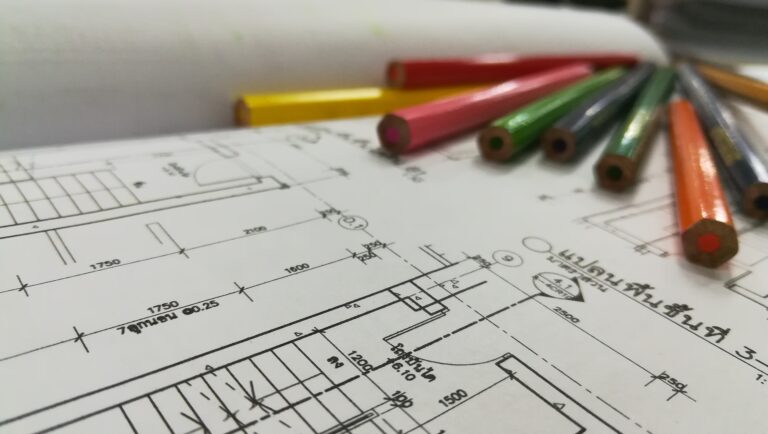Building Bridges: The Power of Effective Collaboration in Engineering Teams
Posted on: July 8, 2023, by : Tuesday

In the world of engineering, where complex challenges demand innovative solutions, the significance of collaboration cannot be overstated. Engineers are often portrayed as brilliant minds working in isolation, but the truth is that their true power lies in their ability to come together, share ideas, and build bridges between their expertise. Effective collaboration is the lifeblood of successful engineering teams, fueling their ability to overcome obstacles and drive transformative change. But what exactly does effective collaboration mean? It encompasses more than just working together—it embodies a dynamic synergy where individuals combine their knowledge, skills, and perspectives to achieve shared goals.
Benefits of Collaboration in Engineering Teams
Improved problem-solving and decision-making:
One of the primary advantages of effective collaboration in engineering teams is the significant enhancement of problem-solving and decision-making processes. By bringing together individuals with diverse perspectives and expertise, collaboration allows for a broader range of ideas and approaches to be considered. Each team member can contribute their unique insight, drawing from their specialized knowledge and experiences. This pooling of diverse perspectives leads to a more comprehensive understanding of the challenges at hand and opens more innovative solutions. By leveraging the collective intelligence of the team, collaboration empowers engineers to make informed decisions that are backed by a wealth of insight and expertise.
Increased innovation and creativity:
Collaboration serves as a catalyst for increased innovation and creativity within engineering teams. By fostering an environment that encourages idea generation and experimentation, collaboration ignites the spark of innovation. When team members collaborate, they can bounce ideas off one another, refine concepts through constructive feedback, and spark new trains of thought. The collective brainstorming and ideation process often leads to breakthrough solutions that would have been unlikely to emerge from individual efforts. Moreover, effective collaboration nurtures a culture of continuous improvement, where engineers are motivated to challenge the status quo and seek new ways to optimize processes, designs, and outcomes. This iterative approach to problem-solving fuels a constant drive for excellence and propels engineering teams toward new levels of creativity and innovation.
Overcoming Challenges to Collaboration
Despite the immense benefits it offers, effective collaboration in engineering teams does not come without its fair share of challenges. It is essential to identify and address obstacles to ensure seamless collaboration. Two primary challenges are communication barriers and the utilization of collaboration tools and technologies.
Communication barriers:
In an increasingly globalized world, engineering teams often comprise individuals from diverse backgrounds, cultures, and languages. This diversity brings valuable perspectives but can also present communication barriers. Language differences and cultural nuances can hinder effective collaboration, leading to misunderstandings and misalignment. Additionally, the rise of remote and distributed teams adds another layer of complexity, as physical distance can limit face-to-face interactions and impede real-time communication. Overcoming these barriers requires proactive efforts such as fostering cross-cultural understanding and leveraging technology to bridge the communication gap.
Collaboration tools and technologies:
The successful implementation of collaboration tools and technologies is crucial for seamless teamwork. Identifying and implementing effective tools that facilitate communication, file sharing, task management, and collaboration is essential. However, integrating these tools with existing systems and ensuring compatibility can be challenging. Poorly chosen or incompatible tools can lead to inefficiencies, data silos, and fragmented workflows, undermining the collaborative spirit. It is vital to carefully assess the specific needs of the engineering team, conduct thorough evaluations of available tools, and ensure smooth integration to enable effective collaboration across all levels and functions.
Strategies for Fostering Effective Collaboration
To foster effective collaboration within engineering teams, various strategies can be used to create an environment that nurtures teamwork and amplifies collective success.
Establishing clear goals and objectives:
One fundamental strategy is to establish clear goals and objectives that guide the team’s efforts. Defining shared team objectives ensures that everyone is aligned toward a common purpose, promoting a sense of unity and collaboration. Additionally, aligning individual goals with team goals creates a sense of ownership and accountability, encouraging team members to work together toward a shared vision. By setting clear targets, engineering teams can prioritize their efforts and direct their collective energy toward achieving tangible outcomes.
Creating a supportive team culture:
A supportive team culture plays a vital role in fostering effective collaboration. It begins with encouraging open and respectful communication among team members. Creating an environment where individuals feel comfortable sharing their ideas, expressing their concerns, and engaging in constructive dialogue promotes collaboration and trust. Active listening, valuing diverse perspectives, and treating each team member’s input with respect are essential aspects of this communication culture. Another key element is promoting knowledge sharing and collaboration rituals. This includes establishing platforms and practices that facilitate the exchange of knowledge, best practices, and lessons learned. Whether it’s regular team meetings, cross-functional workshops, or knowledge-sharing sessions, these rituals encourage collaboration by providing dedicated spaces for collaboration, idea exchange, and learning. By fostering a culture that prioritizes collaboration and knowledge-sharing, engineering teams can tap into the collective wisdom and expertise of their members, driving progress and resulting in success.
Best Practices for Collaborative Engineering
In the realm of collaborative engineering, best practices can amplify the effectiveness of teamwork and drive superior outcomes. By embracing these practices, engineering teams can optimize collaboration and achieve remarkable results.
Cross-functional team collaboration:
Cross-functional collaboration involves breaking down silos and fostering interdisciplinary collaboration within the engineering team. By encouraging engineers from different disciplines to work together, teams can leverage diverse expertise and perspectives to tackle complex challenges more effectively. This collaborative approach helps in uncovering solutions that may have been overlooked within individual silos. Furthermore, collaboration should extend beyond the engineering team to include stakeholders and end-users. By involving these key players in the collaborative process, engineering teams gain valuable insights, gather feedback, and ensure that the final solution addresses the needs and expectations of all stakeholders.
Agile and iterative approaches:
Adopting agile methodologies can significantly enhance collaboration within engineering teams. Agile frameworks, such as Scrum or Kanban, emphasize iterative development, frequent communication, and close collaboration. These approaches promote transparency, adaptability, and teamwork, enabling engineers to respond quickly to changing requirements and feedback. Agile methodologies also foster continuous improvement through iterative feedback loops, where teams regularly reflect on their work, identify areas for enhancement, and implement course corrections. This iterative approach not only keeps the project on track but also creates an environment that encourages experimentation, innovation, and collaborative problem-solving.
Conclusion
In conclusion, effective collaboration is the cornerstone of success for engineering teams. By harnessing the power of collaboration, teams can overcome challenges, drive innovation, and achieve remarkable outcomes. We explored the various benefits that collaboration brings, including improved problem-solving, enhanced decision-making, increased innovation, and a culture of continuous improvement.
Additionally, we identified strategies such as establishing clear goals and objectives, creating a supportive team culture, and adopting best practices like cross-functional collaboration and agile methodologies.
Now, it is time for a call to action. Implementing collaboration practices should be a priority for engineering teams seeking to thrive in today’s competitive landscape. Embrace the power of collaboration by fostering open communication, breaking down silos, and embracing interdisciplinary collaboration. Implement agile methodologies that promote adaptability, teamwork, and continuous improvement. Invest in the right collaboration tools and technologies that support seamless communication and knowledge sharing.
By working together, sharing knowledge and expertise, and leveraging collective intelligence, teams can unlock their full potential and achieve groundbreaking results. Let us build bridges of collaboration, connecting minds and ideas, and strive for excellence in engineering.

